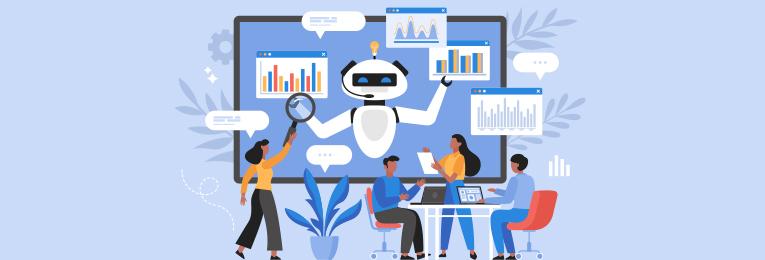Personalize Onboarding With AI: The Future Of Employee Integration
Innovative strategies for tailoring employee training and development through AI
Posted on 09-18-2024, Read Time: 5 Min
Share:

Here are some ways HR can use AI to personalize the employee onboarding experience and help new workers hit the ground confident and well-equipped to perform confidently in their new roles.
1. Identifying Current Skills and Needs
Researchers looked at various onboarding outcomes with the introduction of AI in the workplace and found that 89% of people said excellent onboarding methods improved the company's success. About 86% felt it would teach employees necessary skills.The first step to AI onboarding success is identifying the skills in each role within the company. Gathering data and inputting it into databases allows computers to sift through the information, compare it to industry standards and generate reports on what skills are most needed in the organization. The results can be used to effectively hire and train the right individuals.
2. Automating Forms and Documents
AI can guide new employees through the massive amount of forms and documents that must be collected before beginning work. Simple data, such as name and address, require only input from the person. However, it can also be linked to things already on file, such as a resume or application, to save time.Ideally, the software walks the new employee through the process so HR’s time is free for other work and the company collects all needed information.
3. Assessing Training Relevance
Companies prioritizing employee engagement can use AI to create strong objectives closely aligned with the business's overarching goals and the worker's personal development needs. Getting stakeholders engaged results in broader support from employees and improved collaboration.Company leadership must know what they want to achieve by using AI onboarding. For a more personalized experience, the programs must understand the personalities of new workers and adapt to the speed with which they absorb information. One new hire may be able to zip through training modules and understand the concepts well enough to pass quizzes, while another may need more review time.
Allowing workers to go through the modules at their own pace without timers or pressure can result in a more positive onboarding experience and information that sticks for years to come.
4. Tapping Into Chatbots
AI can handle many tedious onboarding tasks. The new hire can ask questions and begin understanding company procedures and culture without taking time out of the HR professional’s day.For example, a chatbot can be programmed to answer new hires' common questions, such as how to request time off or access benefits portals. Even after onboarding, workers can go into the system and engage the chatbot to access the perks of working for the company. This eliminates the need for HR to answer basic questions.
5. Monitoring AI Usage
Determining how employees interact with AI may help customize the knowledge base. For example, tapping into the power of digital operations can help new staff members manage their workflows, even if they aren’t fully familiar with the job yet.How likely is it someone will use machines to complete tasks? People in customer service may tap into the power of AI-powered chatbots. Someone in the warehouse may only use AI software to check inventory levels or for automated ordering when products run low.
Make the Most of AI in Onboarding
HR professionals shouldn’t underestimate the power of AI to gather feedback and offer direct support to new hires. Bots can ask for ratings as new employees undergo training and shift the focus to those things most suited for their jobs. Segmenting sections based on the department and specific role can further personalize training and ensure successful onboarding.Author Bio
 |
Zachary Amos is a Tech Expert with a special interest in HR technology, automation, and cybersecurity. |
Error: No such template "/CustomCode/topleader/category"!
